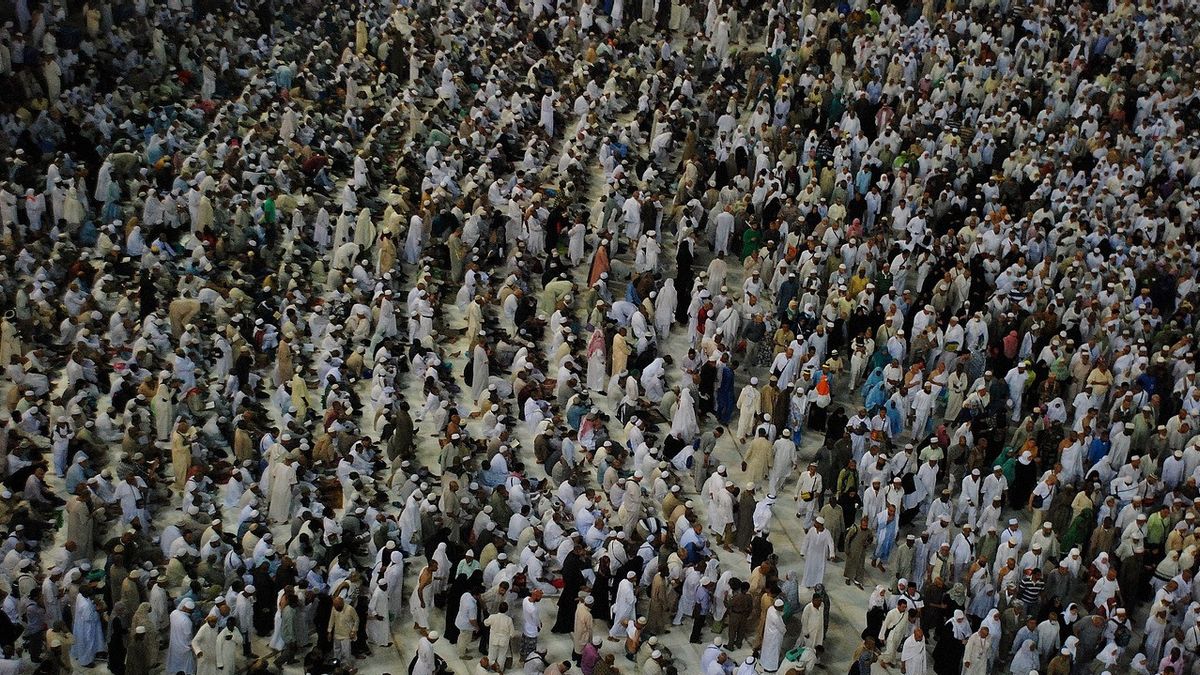YOGYAKARTA Hajj is the fifth Islamic pillar. This service is first prayed for in the sixth year of Hijri. Hajj is considered legal if the congregation has carried out 6 hajj pillars, namely Ihram, Wukuf, thawaf, sai, tahallul, and orderly.
If a Muslim and Muslim who undergoes the pilgrimage leaves one of several hajj pillars, whether intentional or unintentional, then the pilgrimage is illegal.
The following article will explain the 6 hajj pillars that must be worked on. Come on, see the explanation!
Summarized from various sources, Wednesday, May 8, 2024, the following is the correct order of the Hajj pillars.
1. Ihram
Ihram is the first Hajj unit. Ihram is defined as an intention that expresses the seriousness of a Muslim and Muslim to start the pilgrimage by wearing an ihram cloth.
Before speaking, you should purify yourself by bathing in the junub, having ablution, wearing fragrances, tidying your beard, tidying your armpits and pubic hair.
Ihram was marked by taking waqat in predetermined places, followed by the implementation of the sunnah prayer in two rakaats.
After speaking, pilgrims are not allowed to use fragrances, cut nails and hair, hold marriage contracts, and have a husband and wife relationship.
In addition, pilgrims are also not allowed to carelessly recite waqat. Pilgrims need to pay attention to the time (miqat zami) and the place of palafalannya (miqat makani). During the allocation of the intention to be carried out in Syawal, Dzulq'dah and at the beginning of Dzulhijjah.
The following is the intention of the ihram Hajj which can be pronounced:
Nawaitul hajja wa ahramtu bihi lillahi taala.
Meaning: 'I intend to have a pilgrimage with a fire because Allah is Taala.'
In the book Tutunan Manasik Hajj and Umrah published by the Ministry of Religion of the Republic of Indonesia, miqat makani is carried out according to the wave of departures. Here are the places:
After reciting the intention of ihram, pilgrims are advised to immediately take a shower, wear fragrances, two rakaat sunnah prayers, and wear ihram clothes.
Shirt clothes for men consist of two sheets of cloth. One is used to cover the waist to armpits. Another is spread from the shoulder to the bottom of the armpit.
While ihram clothes for women are ordinary clothes that cover white aurat.
2. Wukuf
The second Rukun Hajj is wukuf in Padang Arafah. This is the culmination of the entire series of pilgrimages.
On Dzulhijja 9, all Hajj pilgrims will remain silent in the Arafah Field starting from the turn of the sun (zuhur) until dawn on the 10th of Dzulhijjah.
During wukuf, pilgrims are advised to increase dhikr, tahlil, istighfar, read shalawat, read Al-Quran, and pray.
3. Thawaf
After wukuf in Padang Arafah, the pilgrims continued their journey to the Grand Mosque to carry out thawaf Ifadhah, which was around Ka'bah seven times. Starting from the direction of Hajar Aswad with the position of Ka'bah on the left of the pilgrims.
During tawaf, pilgrims are advised to increase their prayers and must be in a holy state from small and large hadas.
There are no rules that limit thawaf time. However, thawaf should be done before the tasriq day ends, namely around 11, 12, and 13 Dzulhijjah.
4. Sai
Sai is a small run or walk 7 times from the Safa hill to the Marwah hill. This fourth Hajj Rukun remembers the struggle of Hajar, Mrs. Isma'il AS, in looking for water sources in the desert. The pilgrims who carried out Sai were destroyed to be holy from small hadas and large hadas.
5. Tahallul
After performing Sai, pilgrims are required to cut their hair or tahallul. This fifth Hajj routine should have been carried out from the start when it arrived in Mina, or after the match from Muzdalifah for Jumratul Aqabah's melontar.
6. Orderly
The sixth or last routine is orderly, namely carrying out the Hajj pillars in a sequence ranging from ihram to tahallul. Pilgrims who do not carry out the Hajj pillars in an orderly manner, either because they neglect one of the pillars or do not carry out a series of compassions with the right order, the pilgrimage is considered invalid.
This is information about 6 pillars of Hajj that should not be abandoned. Hopefully this article can add insight to the loyal readers of VOI.ID.
The English, Chinese, Japanese, Arabic, and French versions are automatically generated by the AI. So there may still be inaccuracies in translating, please always see Indonesian as our main language. (system supported by DigitalSiber.id)








